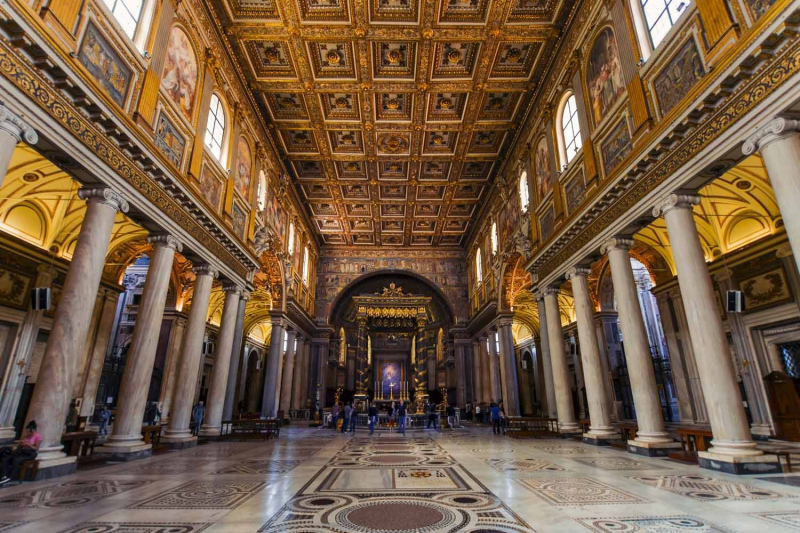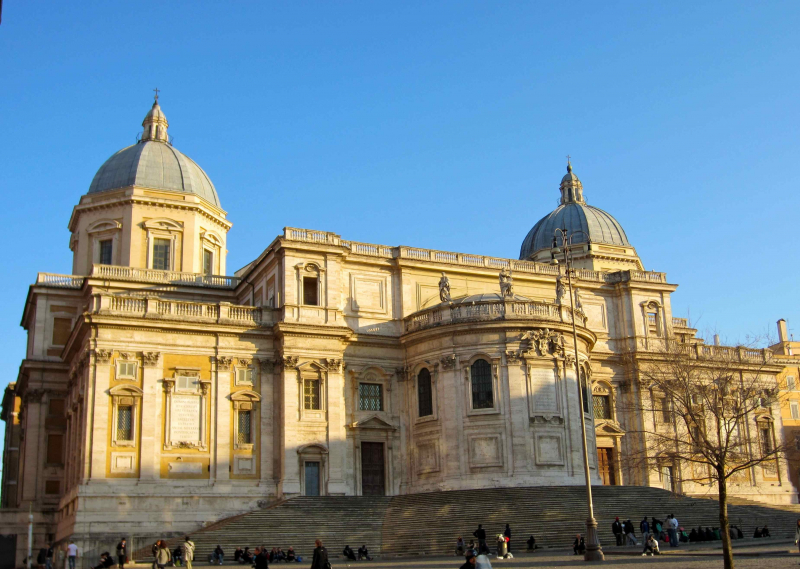Basilica di Santa Maria Maggiore
Santa Maria Maggiore, one of Rome's four patriarchal basilicas and a significant pilgrimage site, has the distinction of being the only Roman church to have offered daily mass since the fifth century. The Virgin directed the fourth-century Pope Liberius to construct a church where the following day's snow fell, which is where the basilica is presently located. The Pope gave the order to build the church when the snow started to fall on Esquiline hill the following morning, August 5.
Later additions included a new apse in the 13th century, Rome's tallest campanile in 1377, and Giuliano da Sangallo's gold coffered ceiling in the late 15th century, which featured the first gold from America. Transepts are formed by two side chapels that were added in the 16th century. Cappella Sistina, on the right, includes a bronze tabernacle and the tombs of two popes, while Cappella Paolina features an altarpiece with ornate decorations. Despite being a 13th-century sculpture, the highly regarded Virgin image on the high altar's veil is typically attributed to St. Luke. With its three aisles being divided by 36 marble and four granite columns, this 86-meter-long interior is among the best and most opulent in all of Rome. The top part of the walls is decorated with Rome's oldest mosaics, which date to the fourth or fifth century, while the floor is filled with Cosmatesque work, a complex geometric inlay of colored stone that dates to the middle of the 12th century.












